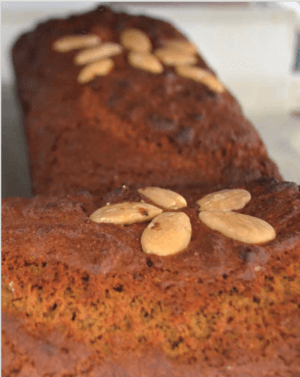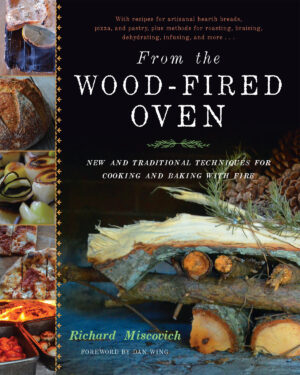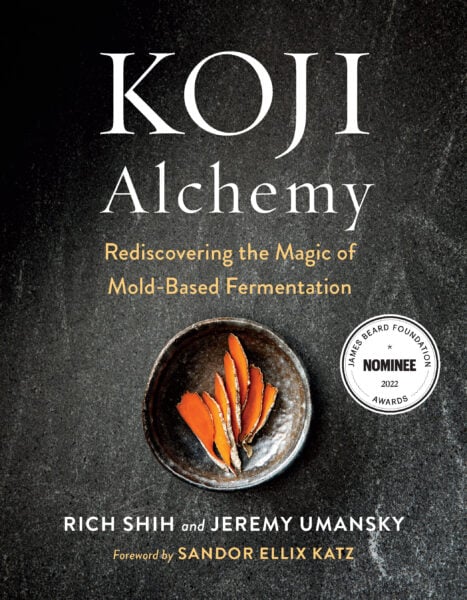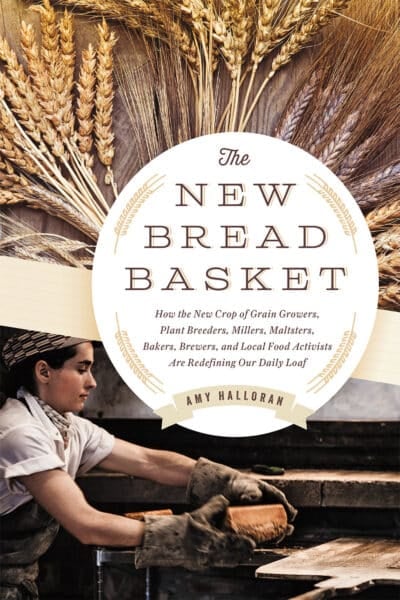Spice Bread: Quick and Easy Pain d’Epices

Need a little spice in your life? This recipe for Pain d’Epices will do the trick! Bring warmth and joy to your table with a slice of this delicious spice bread. An added bonus: Your house will smell amazing while the bread is in the oven.
The following is an excerpt from From the Wood-Fired Oven by Richard Miscovich. It has been adapted for the web.
Spice Bread: Pain d’Epices
This is an old-fashioned gingerbread-like quick bread — the name means “spice bread.” It’s a holiday favorite. I’ve sold it, given it away as gifts, and eaten it at Christmastime for years. The main leavener is baking soda, which creates carbon dioxide when it comes into contact with the acidic honey.
Unlike baking powder, which makes carbon dioxide when it becomes wet and again when it meets the heat of the oven, baking soda creates carbon dioxide only once. Make sure your oven is ready to go once you start mixing this one. Unbaked batter that sits around will lose its carbon dioxide and become heavy.
Like other dense rye breads, this bread has an impressive shelf life. It will become a bit chewier after several days, but I find it delicious toasted and served warm with butter.
This recipe was inspired by a recipe in Saveur magazine, issue 30.
Yield: 2 loaf pans, 1 Pullman pan, or numerous mini loaves
Prefermented flour: 0%
Wood-fired oven temperature window: 350°F (177°C) and falling
Home oven: Preheat the oven to 350°F (177°C).

Ingredients
- 4 1/2 cup + 1/3 cup whole rye flour
- 2 tsp baking soda
- 1 Tbsp anise seeds, ground
- 1 tsp nutmeg, ground
- 1 tsp coriander, ground
- 1/2 tsp cinnamon
- 1/2 tsp cloves, ground
- 1 1/8 cup milk
- 2 cups honey
- 1/4 cup fresh orange peel, grated on the small holes of a box grater (about 2–3 oranges)
- 1-2 lemons for fresh lemon peel, zested, grated on the small holes of a box grater
- 3 egg yolks, beaten
- Whole raw almonds (blanched), as needed
Procedure
- Sift together the rye flour, baking soda, and spices into a large bowl and set aside.
- Whisk the milk and honey together over medium heat and bring to a gentle simmer.
- Add the orange and lemon peel and remove from the heat.
- Before you add the yolks, you must first temper them so they don’t cook in the hot mixture. To do this, slowly drizzle a little of the hot mixture into the yolks while whisking. Now add the tempered yolks back into the liquids.
- Add the liquids to the dry ingredients and mix gently just until smooth.
- Divide evenly between two greased loaf pans.
- Arrange the almonds in a decorative pattern on top of the unbaked batter.
- If you’re using a home oven, bake at 350°F for 15 minutes. Reduce the temp to 325°F and bake for approximately 25 minutes more, or until a toothpick inserted in the center comes out clean. The loaves may need to be tented with foil to prevent excessive darkening.
- Let the loaves cool for 10 minutes, then unmold them and cool them completely before slicing.
Recommended Reads
Recent Articles
Chances are, you’ve seen cattails growing on the edge of your local lake or stream at least once or twice. Instead of just passing these plants, try foraging for and cooking them to create delicious seasonal dishes! The following excerpt is from The New Wildcrafted Cuisine by Pascal Baudar. It has been adapted for the…
Read MoreGarlic mustard: while known as “invasive,” this plant can be consumed in its entirety and has great nutritional value. Plus, the garlic-flavor is a perfect addition to any recipe that calls for mustard! The following are excerpts from Beyond the War on Invasive Species by Tao Orion and The Wild Wisdom of Weeds by Katrina…
Read MoreOh, honeysuckle…how we love thee. If only there was a way to capture the sweet essence of this plant so we could enjoy it more than just in passing. Luckily, foraging and some preparation can help make that happen! Here’s a springtime recipe that tastes exactly like honeysuckle smells. The following excerpt is from Forage,…
Read MoreIntroducing…your new favorite brunch dish! This whole broccoli frittata is packed with fresh, wildcrafted flavors that are bound to help you start your day off on the right foot. The following is an excerpt from The Forager Chef’s Book of Flora by Alan Bergo. It has been adapted for the web. RECIPE: Whole Broccoli Frittata…
Read MoreWondering where to forage for greens this spring? Look no further than hedges, which serve as natural havens for wild greens and herbs! The following is an excerpt from Hedgelands by Christopher Hart. It has been adapted for the web. Food from Hedges: Salads and Greens Let’s start by looking at all the wild foods…
Read More









